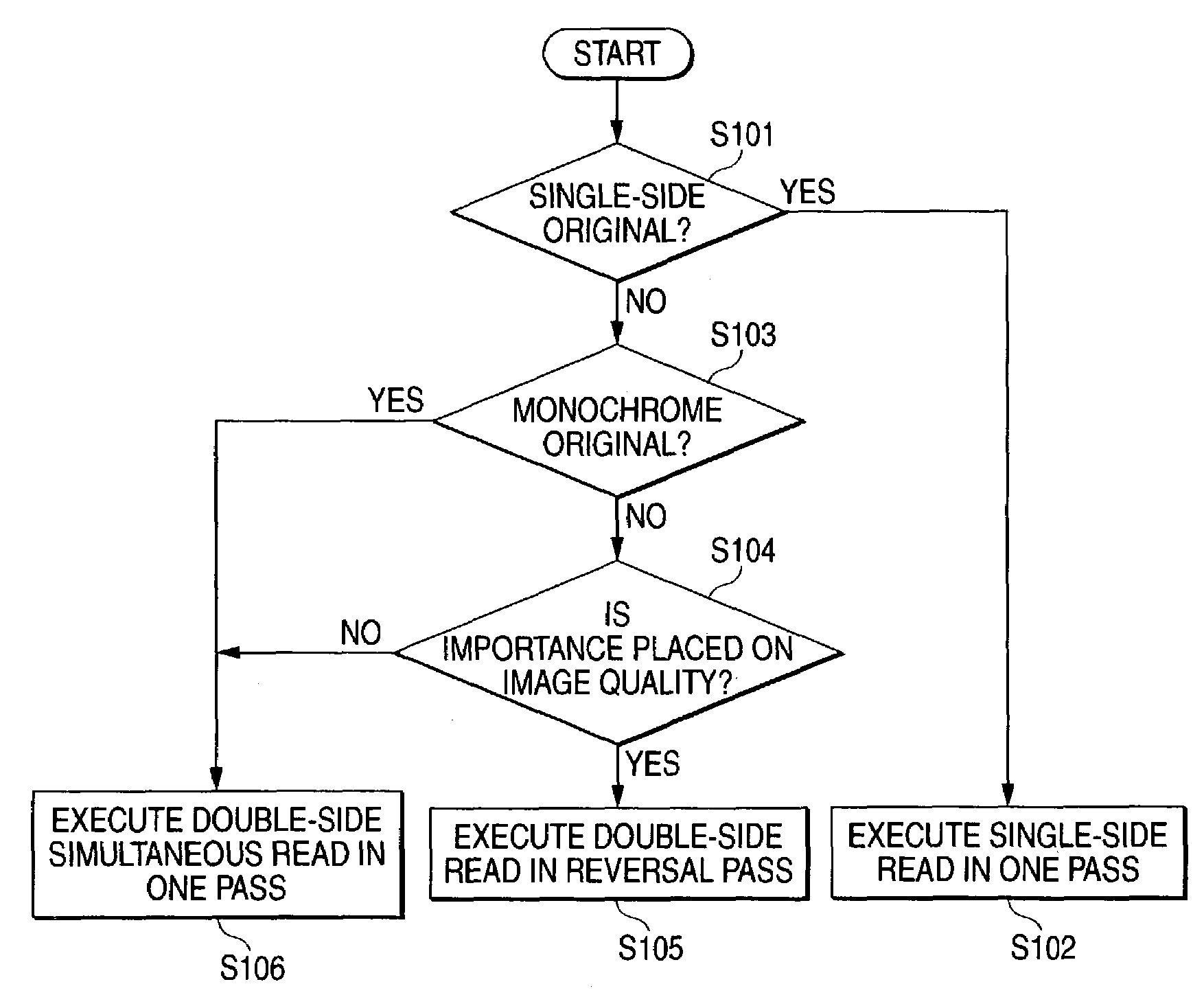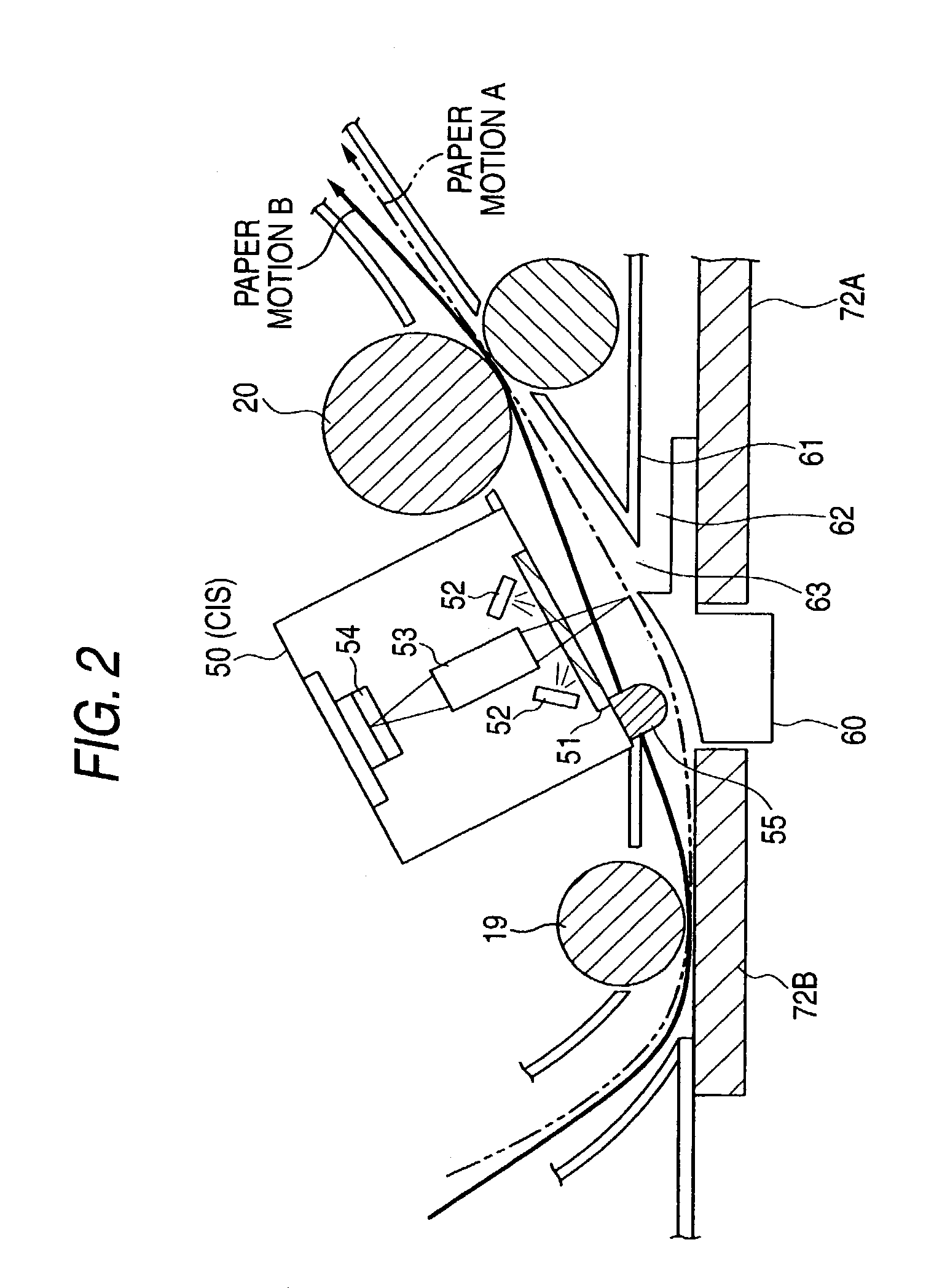Image reader with two duplex copy modes
a duplex copy and image reader technology, applied in the field of image readers, can solve the problems of poor productivity in reading both sides, difficult to transport an original of a predetermined cardboard having a large basis weight, and take a long time in both sides to achieve the effect of excellent ease of us
- Summary
- Abstract
- Description
- Claims
- Application Information
AI Technical Summary
Benefits of technology
Problems solved by technology
Method used
Image
Examples
Embodiment Construction
[0027]Referring now to the accompanying drawings, there is shown a preferred embodiment of the invention.
[0028]FIG. 1 is a drawing to show an image reader incorporating an embodiment of the invention. The image reader includes an original feeder 10 for transporting originals in order from a stacked original bundle, a scanner 70 for reading an image by scanning, and a processor 80 for processing a read image signal.
[0029]The original feeder 10 comprises an original tray 11 for stacking an original bundle of a plurality of originals and a tray lifter 12, for moving up, and down the original tray 11. It also comprises a naja roll 13 for transporting an original on the original tray 11 moved up by the tray lifter 12, a feed roll 14 for transporting the original transported by the naja roll 13 further to a downstream point, and a retard roll 15 for handling the originals supplied by the naja roll 13 separately one by one. First, an original is fed to a first transport passage 31. Along w...
PUM
 Login to View More
Login to View More Abstract
Description
Claims
Application Information
 Login to View More
Login to View More - R&D
- Intellectual Property
- Life Sciences
- Materials
- Tech Scout
- Unparalleled Data Quality
- Higher Quality Content
- 60% Fewer Hallucinations
Browse by: Latest US Patents, China's latest patents, Technical Efficacy Thesaurus, Application Domain, Technology Topic, Popular Technical Reports.
© 2025 PatSnap. All rights reserved.Legal|Privacy policy|Modern Slavery Act Transparency Statement|Sitemap|About US| Contact US: help@patsnap.com



